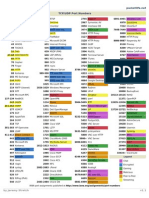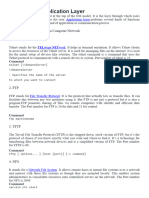date : 01-07-2023
NSE - nmap scripting engine
what is port number
a way to identify a specific process to which an internet or other network message
is to be forwarded when it arrives at a server.
All network-connected devices come equipped with standardized ports that have an
assigned number.
There are 65,535 possible port numbers, although not all are in common use.
Some of the most commonly used ports, along with their associated networking
protocol, are:
Ports 20 and 21: File Transfer Protocol (FTP). FTP is for transferring files
between a client and a server.
Port 22: Secure Shell (SSH). SSH is one of many tunneling protocols that create
secure network connections.
Port 25: Historically, Simple Mail Transfer Protocol (SMTP). SMTP is used for
email.
Port 53: Domain Name System (DNS). DNS is an essential process for the modern
Internet;
it matches human-readable domain names to machine-readable IP addresses,
enabling users to load websites and applications without memorizing a long list of
IP addresses.
Port 80: Hypertext Transfer Protocol (HTTP). HTTP is the protocol that makes the
World Wide Web possible.
Port 123: Network Time Protocol (NTP). NTP allows computer clocks to sync with each
other, a process that is essential for encryption.
Port 179: Border Gateway Protocol (BGP). BGP is essential for establishing
efficient routes between the large networks that make up the Internet
(these large networks are called autonomous systems). Autonomous systems use BGP to
broadcast which IP addresses they control.
Port 443: HTTP Secure (HTTPS). HTTPS is the secure and encrypted version of HTTP.
All HTTPS web traffic goes to port 443.
Network services that use HTTPS for encryption, such as DNS over HTTPS, also
connect at this port.
Port 500: Internet Security Association and Key Management Protocol (ISAKMP), which
is part of the process of setting up secure IPsec connections.
Port 587: Modern, secure SMTP that uses encryption.
Port 3389: Remote Desktop Protocol (RDP). RDP enables users to remotely connect to
their desktop computers from another device.













































